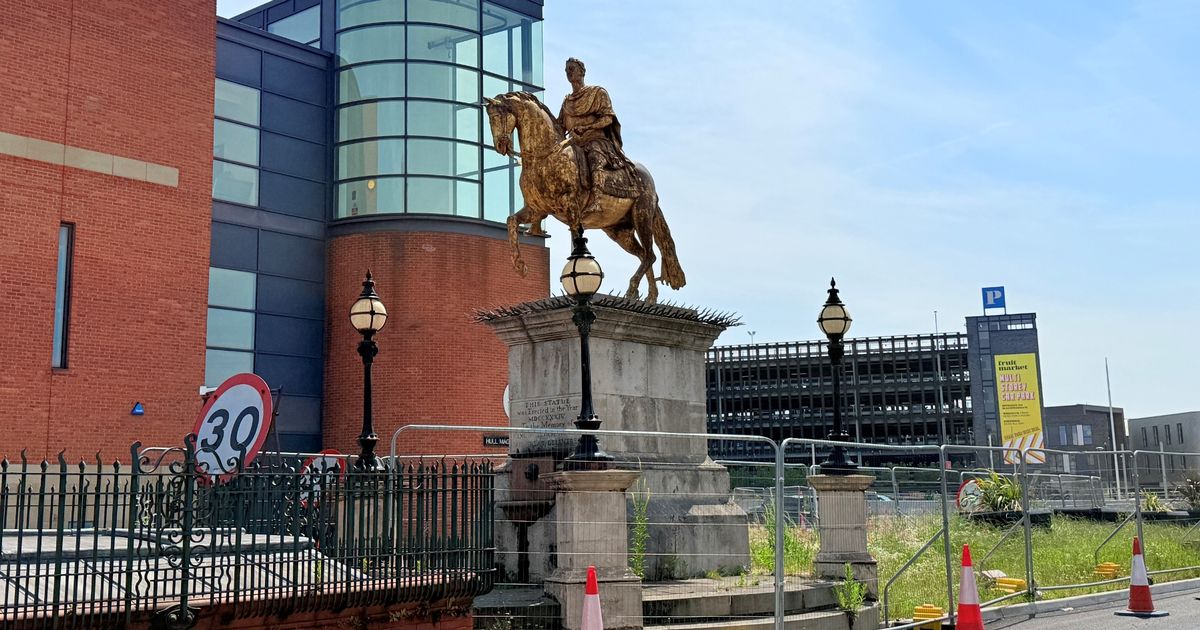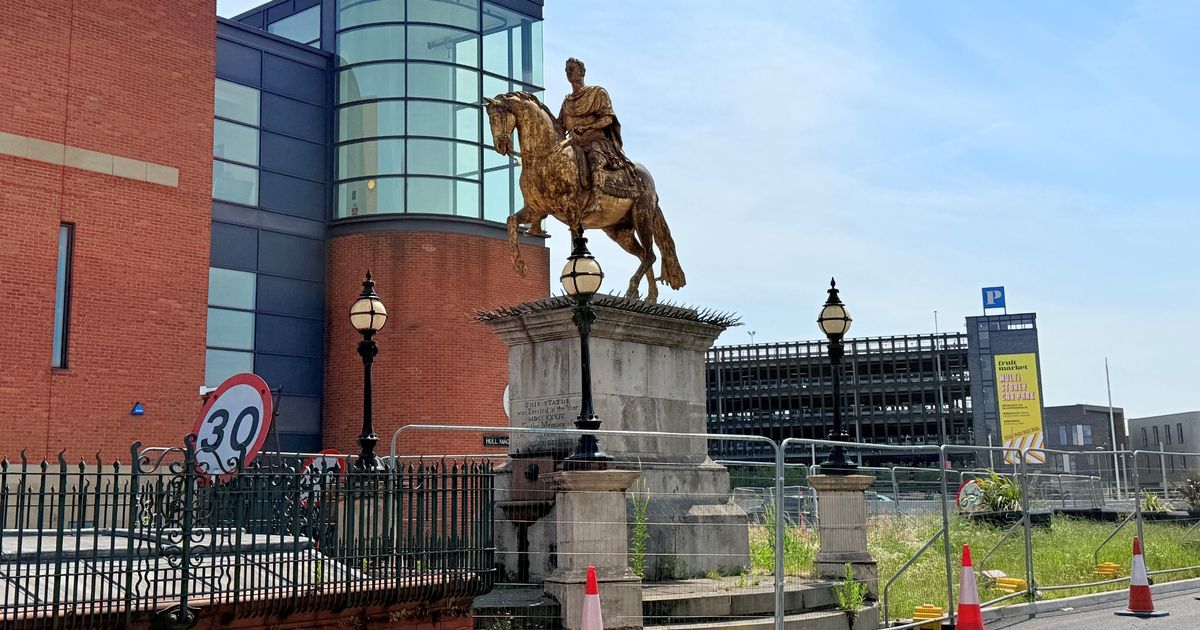

Hull’s iconic ‘King Billy’ statue is set to be restored when the A63 Castle Street project is finished.
The golden landmark in memory of King William III has stood on Market Place since 1734 and is one of the city’s “most treasured monuments”. Hull City Council says the statue will be fenced off for a survey this week which is being conducted by Lost Art.
This work will assess the monument’s condition and help determine the best approach to restore it to its former glory. The statue’s restoration will then take place once the A63 scheme is completed, which is expected to be in 2026.
This work forms part of the council’s recently approved five-year infrastructure plan, which includes the preservation of Hull’s historic statues and monuments.
Councillor Mark Ieronimo, cabinet portfolio holder for transport and infrastructure at Hull City Council, said: “King Billy is one of Hull’s most treasured monuments, and we are committed to preserving it for future generations. This condition survey is the first step in a wider plan to restore the statue with the care and respect it deserves.
“As part of our five-year infrastructure investment programme, we’re not only improving transport routes, but also protecting the heritage that makes Hull unique.”
The statue commemorates King William III – dubbed ‘our Great Deliverer’ – who, when he was Prince William of Orange, led a coup against King James II which was supported by Hull’s protestant population in 1688. The city remained under Catholic control until December 3 that year, when a plot by Lord Langdale – the then Governor of Hull – and his supporters to lock up all the Protestant officers at the garrison was uncovered.
Secretly backed by Hull’s magistrates, and other local leading figures, the rebel Protestant officers organised a counter-coup and arrested Langdale and his friends. This became known as Town Taking Day which was celebrated in Hull for more than a century.
The events in Hull finally crushed any hope that James had of his cause and he fled the throne on December 11 leading to the proclamation and coronation of King William III in 1689.


